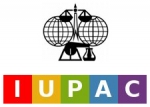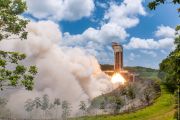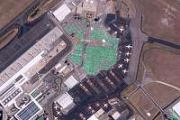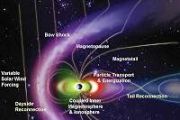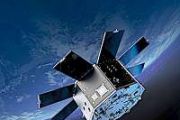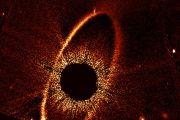Displaying items by tag: physics
Jefferson Laboratory
Thomas Jefferson National Accelerator Facility (Jefferson Lab) is one of 17 national laboratories funded by the U.S. Department of Energy. The lab also receives support from the City of Newport News and the Commonwealth of Virginia.
The lab's primary mission is to conduct basic research of the atom's nucleus using the lab's unique particle accelerator, known as the Continuous Electron Beam Accelerator Facility (CEBAF). Jefferson Lab also conducts a variety of research using its Free-Electron Laser, which is based on the same electron-accelerating technology used in CEBAF.
In addition to its science mission, the lab provides programs designed to help educate the next generation in science and technology, and to engage the public.
TRIUMF
TRIUMF is Canada's national laboratory for particle and nuclear physics.
Its headquarters are located on the south campus of the University of British Columbia in Vancouver, British Columbia. TRIUMF houses the world's largest cyclotron, a source of 500 MeV protons, which was named an IEEE Milestone in 2010.
TRIUMF's activities involve particle physics, nuclear physics, nuclear medicine, and materials science.
AstroParticle and Cosmology Laboratory - APC
The field of astroparticle physics lies at the interface between the study of the infinitely large and infinitely small, between particle physics and astrophysics.
The AstroParticle and Cosmology laboratory (APC) was designed to bring together the different communities (experimentalists, theorists and observers) involved in this field. It was created in 2005 during the overhaul of the University of Paris 7 on the campus of Paris Rive Gauche with laboratories MPQ (Matériaux et Phénomènes Quantiques) and MSC (Matière et Systèmes Complexes). APC brings together 75 permanent researchers, and over sixty engineers, technicians and administrative staff. Including non permanent staff (PhD students, postdoctoral fellows, visitors), there are some 200 people in this new structure. Besides the University of Paris Diderot, the laboratory funding agencies are CNRS (represented by three of its Institutes: mainly IN2P3, but also INSU and INP), CEA (IRFU) and the Paris Observatory.
Lawrence Livermore National Laboratory
The Lawrence Livermore National Laboratory (LLNL) is a Federally Funded Research and Development Center founded by the University of California in 1952. It is a research and development institution for science and technology.
The Lawrence Livermore National Laboratory has a mission of strengthening the United States’ security through development and application of world-class science and technology to:
- Enhance the nation’s defense;
- Reduce the global threat from terrorism and weapons of mass destruction;
- And respond with vision, quality, integrity and technical excellence to scientific issues of national importance.
LLNL is home to many unique facilities and a number of the most powerful computer systems in the world,
The laboratory was honored in 2012 by having the synthetic chemical element livermorium named after it.
It is primarily funded by the United States Department of Energy (DOE).
New Element 112 is Named Copernicium
IUPAC has officially approved the name copernicium, with symbol Cn, for the element of atomic number 112.
Priority for the discovery of this element was assigned, in accordance with the agreed criteria, to the Gesellschaft für Schwerionenforschung (GSI) (Center for Heavy Ion Research) in Darmstadt, Germany. The team at GSI proposed the name copernicium which has now been approved by IUPAC. Sigurd Hofmann, leader of the GSI team stated that the intent was to "salute an influential scientist who didn't receive any accolades in his own lifetime, and highlight the link between astronomy and the field of nuclear chemistry."
The name proposed by the Gesellschaft für Schwerionenforschung (GSI) lies within the long tradition of naming elements to honor famous scientists. Nicolaus Copernicus was born on 19 February 1473, in Torún, Poland and died on 24 May 1543, in Frombork/Frauenburg also in Poland. His work has been of exceptional influence on the philosophical and political thinking of mankind and on the rise of modern science based on experimental results. During his time as a canon of the Cathedral in Frauenburg, Copernicus spent many years developing a conclusive model for complex astronomical observations of the movements of the sun, moon, planets and stars. His work published as “De revolutionibus orbium coelestium, liber sixtus” in 1543 had very far reaching consequences. Indeed the Copernican model demanded major changes in the view of the world related to astronomy and physical forces and well as having theological and political consequences. The planetary system introduced by Copernicus has been applied to other analogous systems in which objects move under the influence of a force directed towards a common centre. Notably, on a microscopic scale this is the Bohr model of the atom with its nucleus and orbiting electrons.
The Recommendations will be published in the March issue of the IUPAC journal Pure and Applied Chemistry and is available online at Pure Appl. Chem., 2010, Vol. 82, No. 3, pp. pp 753-755 (doi: 10.1351/PAC-REC-09-08-20). Priority of claims to the discovery of the element of atomic number 112 was determined by a joint working party of independent experts drawn from the International Union of Pure and Applied Chemistry (IUPAC) and the International Union of Pure and Applied Physics (IUPAP). The group’s report was published in July 2009, Pure Appl. Chem., 2009, Vol. 81, No. 7, pp. 1331-1343 (doi: 10.1351/PAC-REP-08-03-05). The Joint Working Party will issue a second report, dealing with claims for the discovery of elements with atomic numbers in the range 113 to 118, in the near future.
IUPAC was formed in 1919 by chemists from industry and academia. For more than 90 years, the Union has succeeded in fostering worldwide communications in the chemical sciences and in uniting academic, industrial and public sector chemistry in a common language. IUPAC is recognized as the world authority on chemical nomenclature, terminology, standardized methods for measurement, atomic weights and many other critically evaluated data. More information about IUPAC and its activities is available at www.iupac.org.
For questions, contact Dr. Terrence Renner, Executive Director, at <>.





